Starting a grasses and sedges garden
An alternative to turf lawns for the home gardener.

Turf lawns are a feature of most residential Michigan landscapes. Under ideal conditions, turf management requires mowing, weeding and occasional fertilizer application. Yet, most lawns represent a single plant species, Kentucky bluegrass or a mix of two to three grasses. This landscape provides consistency for management, erosion control, greater temperature regulation than asphalt and paved surfaces, and offers a safe surface for recreation.
However, there are also several drawbacks to residential landscapes that exclusively use turf as a ground cover. First, lawns offer minimal resources to wildlife. Second, in periods of drought, it is water intensive to maintain green color throughout the season. On a national level, Milesi et al. (2005) estimate that turf’s irrigation requirements classify it as North America’s largest irrigated crop. Finally, the inputs required for a lush lawn can runoff into local waterways when applied at the incorrect rates or just before a heavy rain event.
The recreational and aesthetic value of a turf lawn are hard to replace. Converting a portion of a turf lawn into another plant type would diversify residential landscapes and provide additional habitat for wildlife and insects. One option is to transform a section of a yard into a grasses or sedges garden. These plants are more recognizable in the margins of commercial development and sometimes on the public right of way (Photo 1). In sites with full sun to partial shade, the addition of native grasses and sedges should be considered for improved soil health, water retention, and reduced inputs in plant production. Drought tolerance and limited management requirements make grasses and sedges an option to consider for the Michigan gardener.
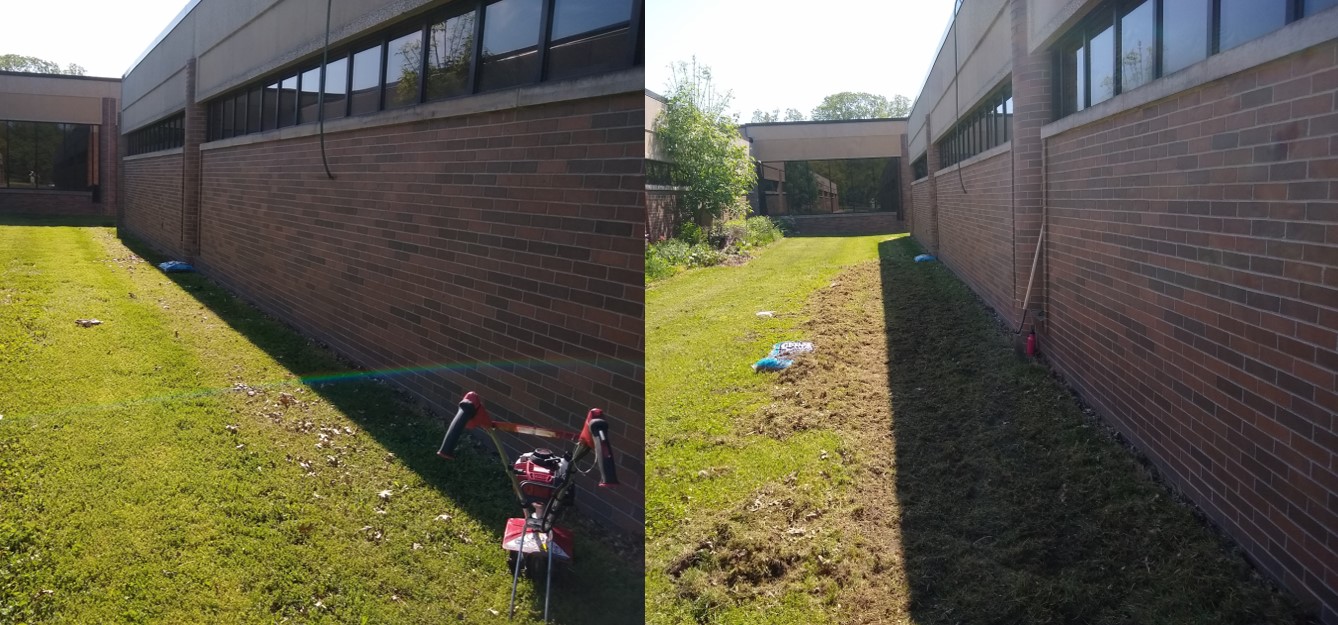
Installing a turf-alternative garden
Mechanical removal is the simplest way to remove turfgrass from an existing site. The soil should be loosened through roto-tilling a strip of grass (Photo 2). Plants should be spaced at least several inches apart to allow room for growth. Michigan State University Extension recommends choosing a variety of plant species for home gardens, and these five plants are a representative group rather than an exclusive list of potential grasses and sedges (Table 1).
|
Table 1. Growth attributes and list of species planted in turf alternative garden. | ||||
|---|---|---|---|---|
|
Plant common name |
Scientific name |
Maximum height (inches) |
Light needed |
Other notes |
|
Blue grama |
Bouteloua gracilis
|
24 |
Full sun |
Thrives in dry soils. |
|
Little bluestem |
Schizachyrium scoparium |
36 |
Full sun to partial shade |
Purple/red color in fall, needs well-drained soil. |
|
Switchgrass |
Panicum virgatum |
36 – 72 (depends on variety) |
Full sun to partial shade |
Excellent for erosion control, tolerant of dry and most areas. |
|
Pennsylvania sedge |
Carex pennsylvanica |
6 – 12 |
Partial to full shade |
Grows in dry or moist soils. |
|
Tussock sedge |
Carex stricta |
36 |
Full sun to partial shade |
Grows in drained to moist soil, good option for rain garden. |
Grasses and sedges in the fall
Growing grasses and sedges adds variety in texture and color to gardens. A grass and sedge garden will offer a difference in color during the season and plants that provide features including seed heads into fall and winter. The height and density of taller grasses will also suppress weeds. While most grass species won’t produce flowers that are attractive to pollinators, the addition of a micro-habitat can provide a refuge for beneficial insects that may manage herbivores in nearby ornamental flowers and vegetables.
Once the fall frost arrives, the above-ground portions of the plants can remain upright for a few weeks longer. The above-ground foliage must be trimmed to the ground in early winter to allow space for new growth. In little bluestem, the reddish color is retained throughout fall (Photo 3). Stems do not need to be cut until early spring. The next article on grasses and sedges will describe annual maintenance and fertilizer practices to keep your turf-alternative garden productive.

Grasses and sedges demonstration garden
In June 2020, I established a grass and sedge demonstration garden outside the Michigan State University Extension office in Macomb County. Clay soils dominated the site, and the garden received partial shade. Five plant species (Table 1) were characterized for their growing patterns and ability to persist with weeding and supplemental irrigation, as needed, every two to three weeks. Each plant species was purchased as trays of plugs from a commercial nursery and planted in rows of five to seven plants with six rows per plant species (Photo 4). Every two to three weeks, I examined the growth of each plant, plant health and flowering patterns.
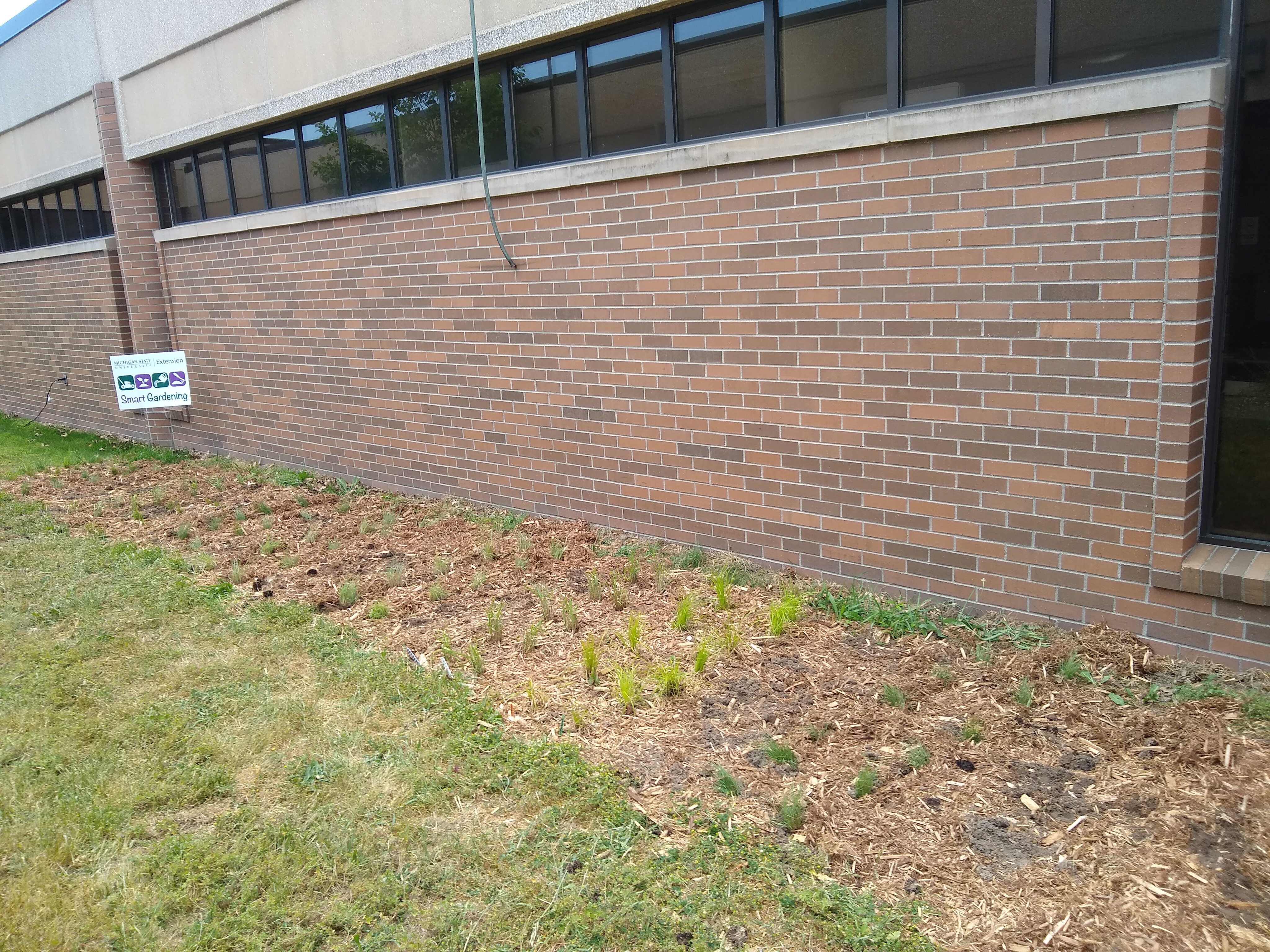
Growth pattern of each plant species
All plants, except for Pennsylvania sedge, reached maximum heights above 10 inches. Although this species is known for its low maximum height, leaf tips regularly browned and did not appear healthy (Photo 5). Pennsylvania sedge establishes and spreads slowly, and evaluation of plant growth in future seasons will determine if there is improved spread or if the species failed to establish at this site.
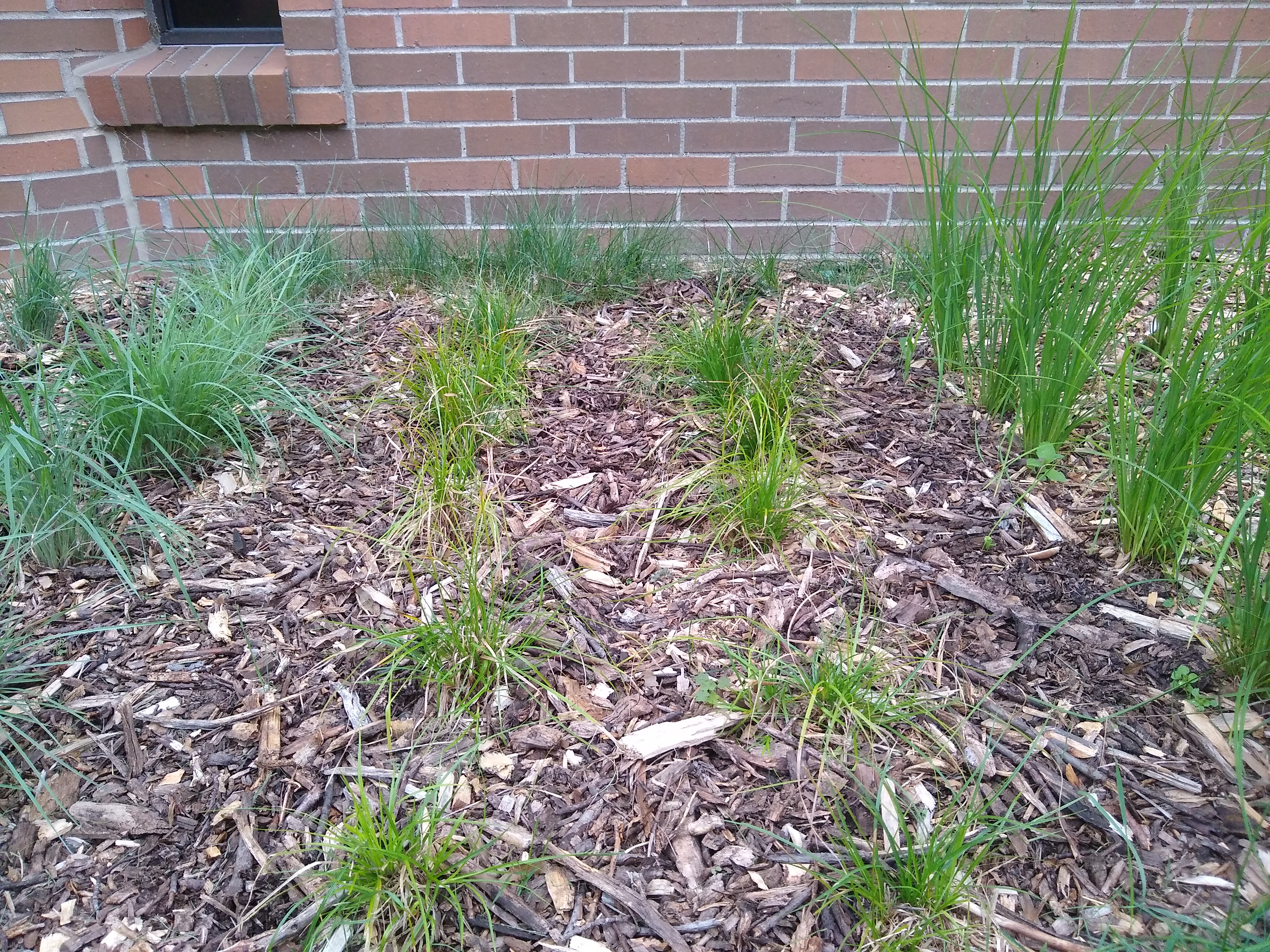
A majority of the selected turf-alternative species thrived in an environment with less irrigation and mowing compared to a typical lawn. Switchgrass and tussock sedge grew the quickest, reaching average maximum heights of 29.6 and 23 inches, respectively, by Sept. 17. Little bluestem remained a similar height for the first 30 days before rapidly growing beginning in early August until it reached an average maximum height of 21.6 inches (Figure 1). Blue grama and switchgrass started flowering in late July, while little bluestem began flowering in mid-August. Including the floral structures of little bluestem, blue gramma and switchgrass would have resulted in an even higher recorded height for each plant species.
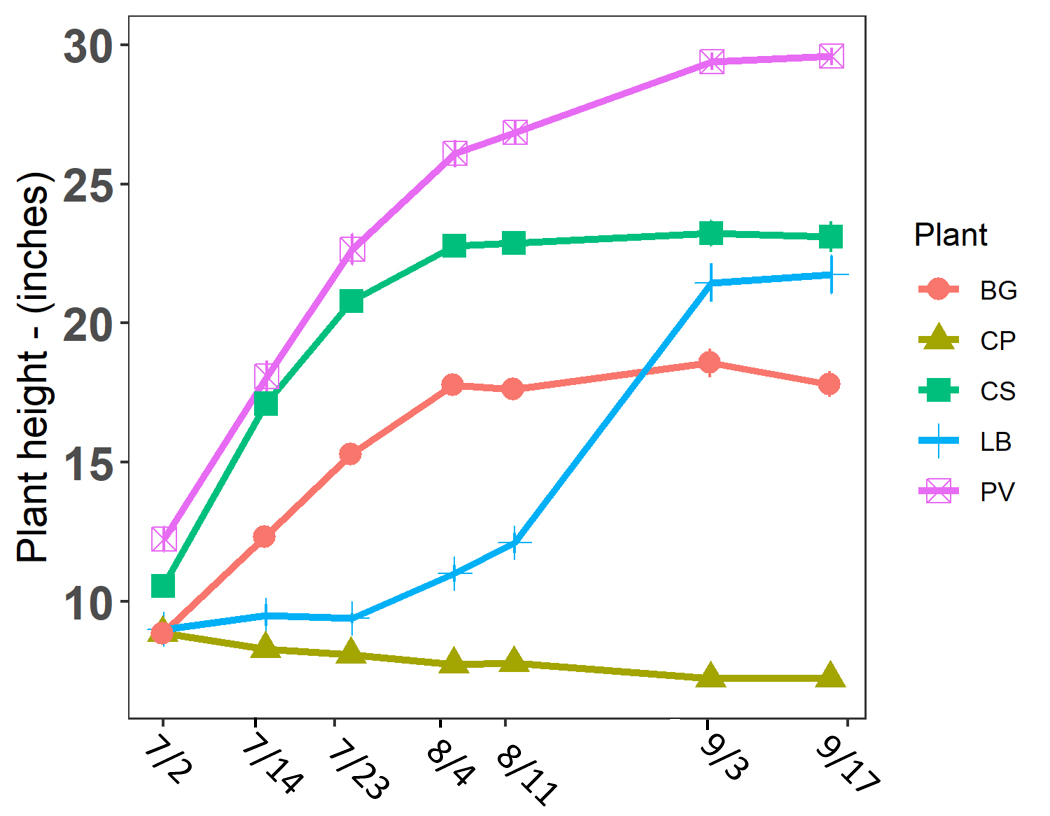
By the end of the growing season, most of the plants filled in the empty space between plants at the start of the growing season (Photo 6). This data only represents a single season of growth. Measurements in future years will further clarify plant growth patterns over time and variation due to annual weather conditions.
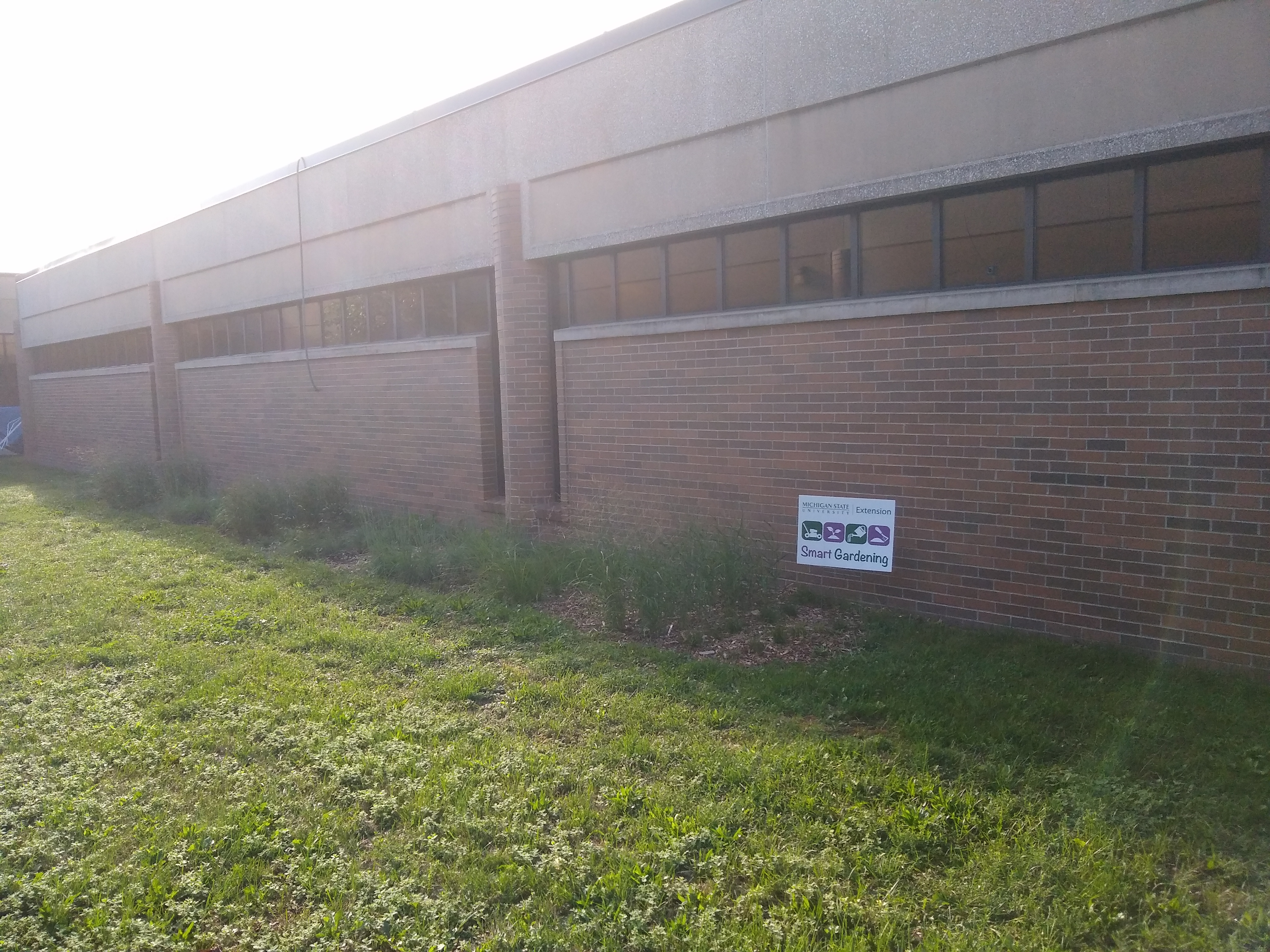



 Print
Print Email
Email




